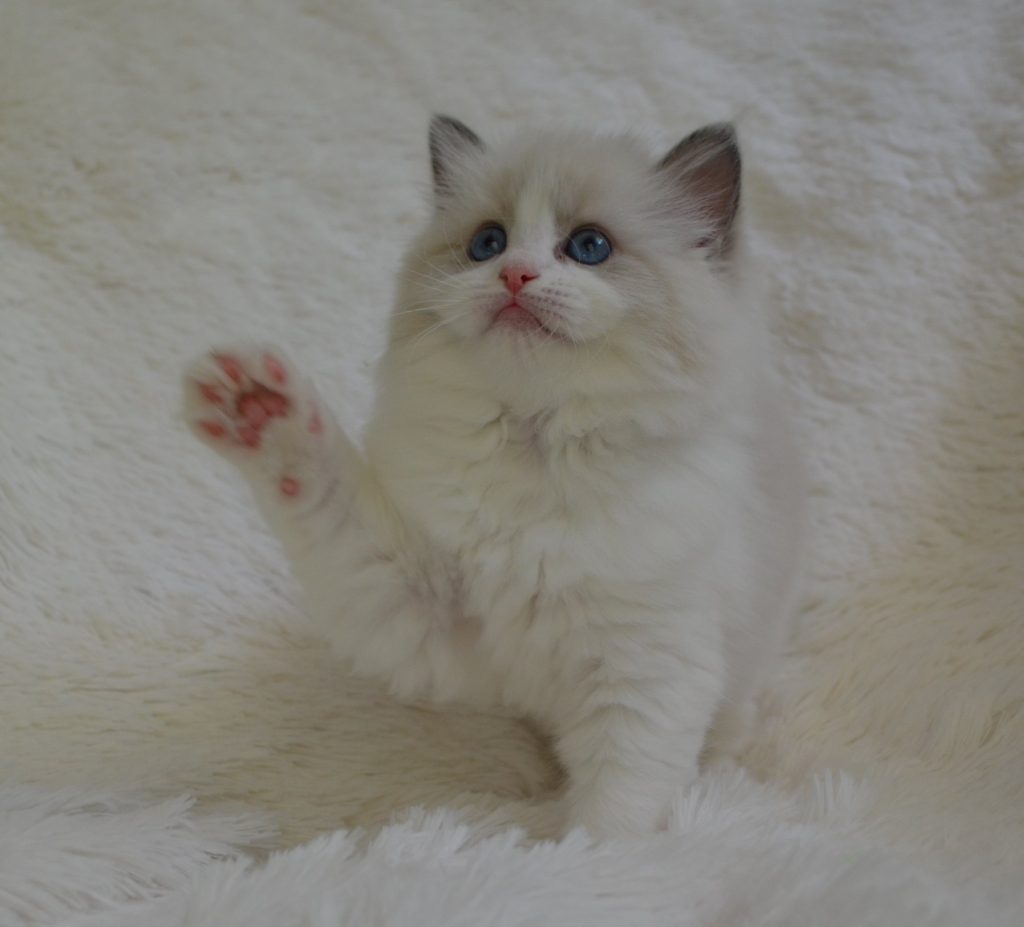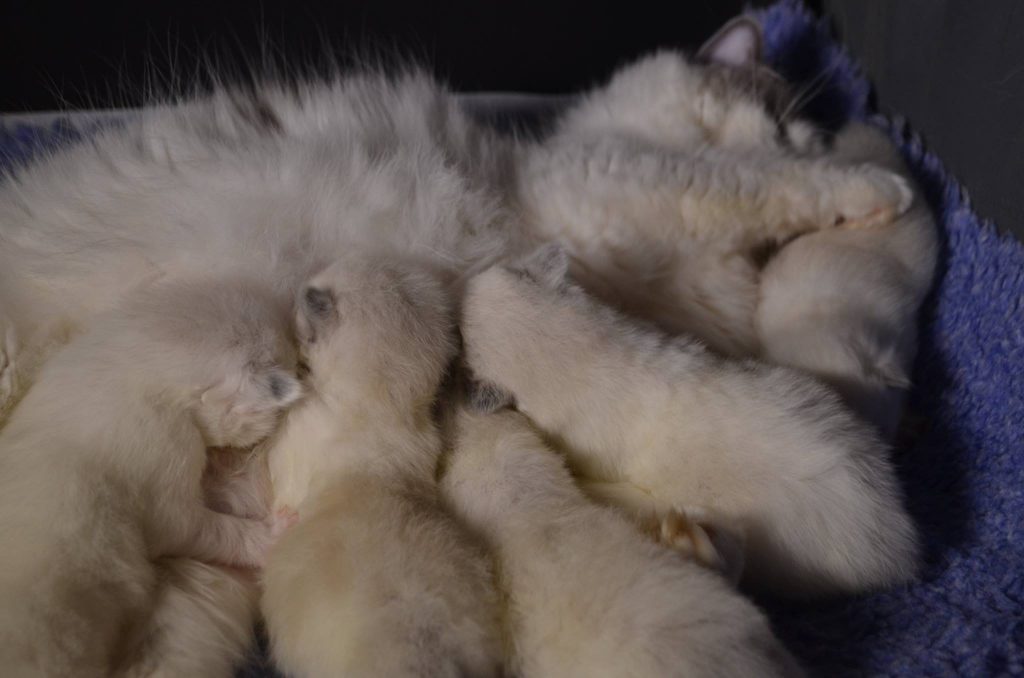This is Why Kittens Knead Their Paws
Of all the behaviors attributed to kittens, kneading their paws has to be one of the cutest. But why exactly is it that kittens knead their paws?
No one knows for sure why kittens knead their paws, but the most common theories are:
- Expressing affection
- Stimulating milk flow during nursing
- Preparing a sleeping surface
- Marking territory
- Pre-mating behavior
- Stretching
- Self-soothing
- Attention seeking
We may never know for sure why it is that kittens knead their paws, but these theories make a lot of sense. It may be a combination of a few of these reasons.

Why Do Kittens Knead Their Paws?
Although most experts agree that paw kneading is an instinctive behavior, the kneading’s original purpose is up for debate. Which one of the following reasons sounds like it matches your kitten the most?
They’re Trying to Show Affection
Kittens often knead their littermates and mother. So if your kitten is kneading you, it’s a sign that she sees you like family and is just showing you some love. Kneading and suckling by kittens are often thought to be bonding behaviors, strengthening ties with mom, littermates, and other adopted family members.
Most cats will purr while kneading, which indicates that they’re feeling comfortable and secure. Your cat very likely wants to communicate this to you in the hopes of making you feel the same way.
Stimulate Milk Flow During Nursing
Another theory is that kittens knead to stimulate milk flow while nursing. According to this theory, kittens come to associate the motion with feelings of contentment, so continue doing it any time they feel content, even when no longer nursing.
This theory goes along with the one above, as it means that if your cat or kitten is kneading, she’s feeling happy and content.

Preparing a Sleeping Surface
Some experts think that kneading is a leftover instinctual behavior from wild cats, who would need to flatten long grass or soften hard surfaces before sleeping outdoors. It’s not uncommon for kittens to have a good kneading session on a blanket or piece of furniture just before laying down to sleep, so this idea makes sense.
However, if kneading is simply a sign of contentment or relaxation, it would still make sense for a kitten to knead before going to sleep as part of a bedtime routine.
They’re Trying to Mark Territory
Cats have scent glands on their paws, so some people hypothesize that kneading is done to mark territory. Your kitten might be kneading things that she wants to claim as her own:
- Her favorite spot on the couch
- An especially comfy blanket
- You!
Cats also mark their environment by rubbing their chin on objects, as well as marking with urine. So, if your kitten is kneading to claim her territory, be grateful that she’s not using urine instead!
Exhibiting Pre-Mating Behavior
Although seen more in adult cats than in kittens, female cats will often knead when they’re in heat, as a signal that they’re ready to mate.
Kittens may start doing it instinctually even before reaching maturity in preparation for adulthood. But this theory doesn’t really explain why male kittens knead as well since it doesn’t tend to be related to mating in male cats.
If anything, the fact that female cats knead while in heat might just prove that kneading may be a behavior that serves multiple purposes, rather than only one.
They’re Simply Stretching
One of the simpler explanations as to why kittens knead is because it just feels good. Some theorize that kneading to kittens is like having a good stretch to humans, and they’re just doing it to get all the kinks out.
When you think about it, it makes sense with all the energy and acrobatics kittens are known for. Just like an athlete will incorporate stretching into their fitness routine, kittens need to do the same to make sure they stay limber for all their gymnastic feats.
They certainly do seem to enjoy it, regardless of what the reason behind it is.
They’re Trying to Soothe Themselves
Although kneading is almost always a sign of contentment, there are times when a cat or kitten will knead as a self-soothing mechanism. If your kitten is anxious, she may start kneading as an effort to make herself feel better. Some signs that it may be due to anxiety are:
- Hiding
- Aggression
- Excessive vocalization
- Fearful body language (shaking, cowering)
- Potty accidents
They Want Attention
Regardless of why your kitten started kneading in the first place, it’s not uncommon for cats to quickly learn that kneading gets them attention. Your kitten might be trying to instigate a play session, or may just want her food bowl filled.
How to Deal with Problematic Kneading
Kneading is a natural behavior driven by instinct, so remember to never punish your kitten for doing it. Punishing instinctive behaviors usually doesn’t work, confuses the kitten, and can later lead to more behavioral issues.
Fortunately, if your kitten’s kneading is problematic, there are several things you can do to make it less of an issue.
Protect the Surface
Protecting the surface that your kitten is kneading with a blanket or pillow will allow her to carry out the behavior without causing damage (or pain, if her kneading surface is your lap). This makes it one of the better solutions since it avoids the possibility of her seeing the behavior as something that she’ll be either punished or rewarded for.
Try to get a feel for when and where your kitten is most likely to start kneading, so you can have the blanket or pillow nearby and ready.
Gently Hold the Kitten’s Paws
One way to discourage kneading is to gently hold the kitten’s paws together or put your hands over her paws, so she has to work harder to perform the motion.
This might not stop the behavior altogether but may help remind her to be gentler, making it hurt less if she uses her nails. The main danger of this method is the possibility of the kitten feeling like she’s being punished, so make sure to use it sparingly.
Encourage the Kitten to Lie Down
Encouraging the kitten to lie down if she tends to knead before napping might shorten the behavior’s duration. If she’s kneading while she’s already sleepy, she’ll very likely just fall asleep and forget all about the kneading.
Like the method above, make sure that you do this gently, avoiding making it seem like punishment or time out.
Provide a Distraction
Kneading behavior can sometimes be avoided by providing a distraction in the way of:
- Play
- Toys
- Treats
Be careful with this method, though, as your kitten may come to realize that any time she wants one of those things, all she has to do is start kneading. This can lead to attention-seeking kneading, as described earlier.
Trim the Kitten’s Claws
Trimming a kitten’s claws won’t do anything to stop the kneading behavior. But it can go a long way towards saving your furniture from damage, and yourself from pain, depending on her kneading surfaces of choice.
Regular claw trimming should be a regular part of your kitten’s care routine anyway, but if you have a particularly aggressive kneader, it’s even more important to stay on top of it.
Final Thoughts
Kittens are endlessly fascinating to watch and interact with, even if we may never be sure of the reason behind some of their behaviors, like kneading. The main thing to keep in mind is that it’s a natural, instinctive behavior that’s generally a sign of contentment.
